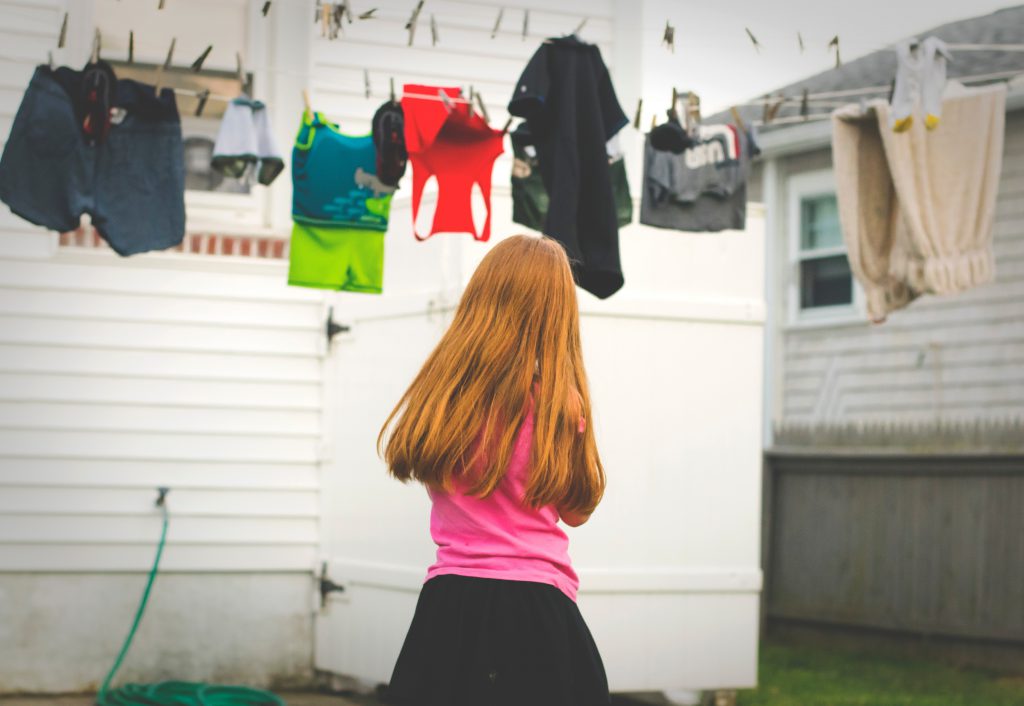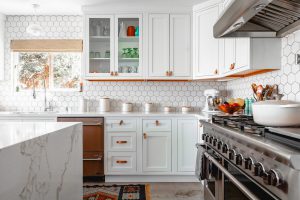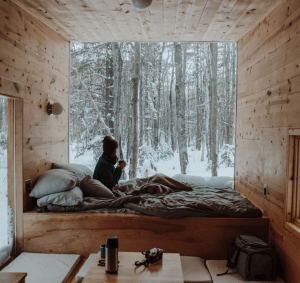The latest news for New Zealand Landlords and Tenants
Healthy Homes and making your rental more eco-friendly
Small changes you make to your rental will not only make it healthy homes compliant but will help your tenants to lower their carbon footprint. Your property can be energy efficient, reduce waste, and have a positive impact on the environment. You’ll get the best out of your investment, and you’ll be helping to save your tenants’ money.
Many of the new Healthy Homes standards that became New Zealand law in 2019 will make your property a lot more energy-efficient, more secure, and reduce the need for maintenance. As a result, you can protect your investment, and your tenants can have a healthy place to live.
We’re going to cover some of the main points in the 2019 Healthy Homes Act and give you some tips that work alongside these to make your house more eco-friendly.
Healthy Homes: Ventilation standards
According to the new ventilation guidelines, every liveable space – pretty much everywhere but the hallway – needs an openable window or door. Kitchens and bathrooms need extractor fans that vent to the outside, to let out moisture and improve airflow.
These guidelines are the minimum requirements for a rental and there are also some other very easy wins you can get by considering making further tweaks to your property.
Is there space for tenants to dry clothes outside?
A dryer uses a lot of energy and costs your tenants’ money. Dryers can also cause dampness and mold when incorrectly installed and this can take away from your other ventilation efforts. This is the same with drying clothes on a rack inside.
If you have space, installing an outdoor clothesline is a great idea. In addition to saving money on power, this will also help with dampness issues and moisture in the home.

Another small change to your house that can benefit both your tenants and your property is having secure latches on windows. This allows tenants to ventilate the house with open windows while they’re away and it’s also great for tenant security.
Conversely, not having secure latches on windows means that ventilation can only happen when tenants are home. As a result, this can lead to mould in bedrooms, on window seals, on curtains, and in the bathroom. Although window latches won’t make your home more eco-friendly, they will help with better ventilation, airflow, and consequently help to avoid issues with mold and dampness.
When is ventilation not ventilation? When it is a draught. Ventilating your home is important but so is knowing the difference between ventilation and a draught. Gaps or holes in walls or ceilings, or around window frames can cause drafts. It shouldn’t be said that these need to be fixed immediately, but perhaps the threat of being non-compliant will give people motivation. We recommend checking your home for draughts and fixing these where noticed. This will reduce heating bills for tenants and ensure you meet the Healthy Homes standards.
Healthy Homes: Insulation
Insulating your property is not only a great way to lift the temperature in your rental, but, it will also save you and your tenants’ money in the long run. How?
- it will cost less to heat the property
- the house will be drier and warmer
- the property will be less prone to mould and dampness

Ceiling and underfloor insulation have both been compulsory since July last year. If you’ve purchased a property since then and plan on making it a rental, check that it is compliant.
If you’re getting your underfloor insulation done, it’s a good idea to check your ground moisture barrier. Moisture and drainage are part of the healthy homes standards too as dampness caused by moisture issues can damage your house and the health of your tenants.
Solving the issue of the ground moisture barrier can be as easy as installing a polyurethane sheet over the ground. These can be picked up at most building supply stores. All you need to do is:
- figure out the ground level of your home in square metres
- allow extra overlaps and a little wastage if you’re doing a DIY job
- head along to whichever local building store is running the best sausage sizzle (you can usually count on Bunnings)
Then pick up your polyurethane, your sausage, and a Stanley knife and you’re away laughing.
Floor and ceiling insulation is the minimum requirement, but there are other things that will help you to have a healthy home. For example, you can think about getting better curtains to help retain heat. Many cities in New Zealand have curtain banks that provide free curtains to people with community services cards.
Healthy Homes: Heating
The World Health Organisation guidelines recommend a minimum temperature of 18˚C in houses. This should be higher for at-risk people such as children, the elderly and people who are ill.

Having your home up to the Healthy Homes insulation standards will help a lot with getting towards that minimum temperature. However, you still need to provide a fixed heating source in the main living room.
Some forms of heating can be expensive to use, and inefficient at heating your house. Reduce the impact your heat source has on the environment:
- use electricity (about 80% renewable) or wood as an option for a renewable heating source
- get an efficient model that suits your needs – how many rooms will it need to heat?
- follow the user instructions on your heater, and keep maintaining it regularly
Recycling and rubbish
Your tenants’ rubbish is not your responsibility… until it is. Tenants are legally required to keep your property tidy and free of rubbish but sometimes that doesn’t happen. This can get very messy when rodents get involved and then other issues such as infestation can arise. Did you know that some breeds of rat have up to 22 offspring at a time? Be proactive by removing a few common barriers to people’s untidy habits so that your property stays trash and rodent-free.

Make sure your tenants are provided with a recycling bin or a good supply of recycling bags. Sometimes people take the bins with them when they leave a tenancy, or recycling bins can be lost, damaged or stolen.
If recycling options aren’t clear or are simply not available, tenants may just put everything in the trash or add to a growing recycling sculpture somewhere on the property.
Do you have a sealed outdoor rubbish bin? If your property is being tenanted by a group flatting, it’s a good idea to provide one to stop animals from getting into rubbish. Its also great at reducing funky smells, and stopping rubbish from blowing away.
Skip the trip to the tip, re-use
If tenants are moving out, suggest dropping unwanted items that are in good condition at an Op Shop.

Some of these second-hand stores such as the Salvation Army also offer a pick-up service for people donating large items like beds, desks and dining tables. This is a great way to re-home tenants old furniture without sending more rubbish to landfill (and paying for the privilege).
Compost/ Gardening
Having a compost reduces the amount of waste going to landfill. Food waste doesn’t break down in landfill, it decomposes and creates greenhouse gases. Reducing the amount of food waste going into rubbish bags is not only good for the environment, it means less vermin getting into bags on rubbish day.

Many landlords have written into rental agreements that they will not allow compost. This is because if it is not done properly it can attract vermin. If your tenants are keen to compost, consider letting them do it. Specify where the compost can go, and make sure they know how to compost.
A composting option for people with limited space is a bokashi bin. This system ferments food waste and it turns into compost within two weeks. This is a great option for smaller homes with not a lot of garden space.
Power / Energy efficiency
LED lights use up to 85% less electricity and last a lot longer than incandescent bulbs. The initial cost of buying LED lights is higher than the traditional light bulbs, which can be off-putting. However, the savings for your tenant and the environment are worth it.
The cheapest LED light you can buy at Countdown is around $5, while the older style bulbs are $0.90 each. But, you’ll save at least $100 in energy over the lifetime of the light bulb. This makes up for the difference in cost many times over.
There are other tricks to saving when it comes to hot water and showering.

Using an an efficient showerhead that has a rate of 9 litres a minute will help to cut hot water usage. This still gives you a great shower but uses much less hot water and therefore less energy. When installing this it’s a great idea to make sure your thermostat is set at the correct temperature to ensure you aren’t losing energy here. Your hot water thermostat maximum to 60 degrees at the cylinder, and no more than 55 degrees at the taps.
Water consumption
Most appliances have an energy rating on them. If you’re supplying a washing machine and dishwasher, consider choosing the ones with high ratings for energy efficiency. Fix any leaky taps, especially hot taps as these cost a lot of money when left to drip over time.

If you are in a region like Auckland where you pay for water usage, this will be of huge benefit to you and your tenants.
Making a few small changes to your property will mean that:
- The home will be more energy efficient
- There will be less issues with rubbish and recycling
- Tenants save money and this will likely lead to less financial stress for them which is what you want when they’re paying rent
Healthy homes are not just about the standards that are set by New Zealand law. They’re about creating a home that keeps your tenants healthy, your tenants happy, and in turn does the same for you and your investment.



